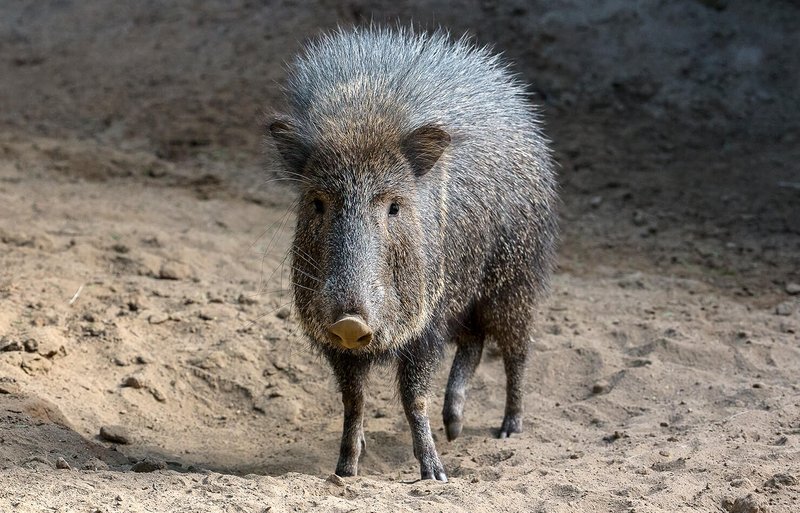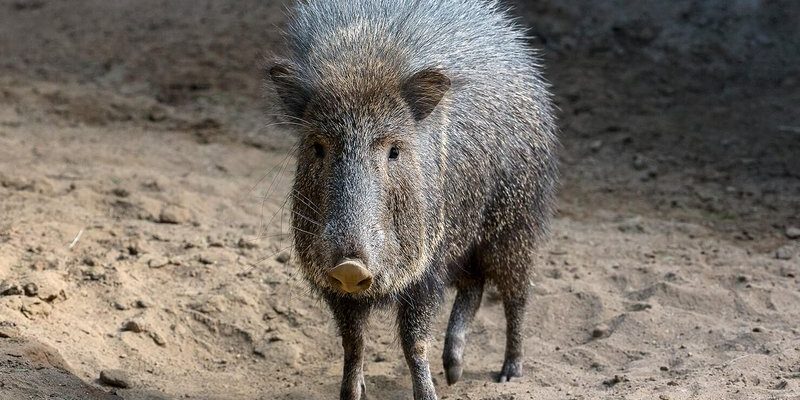
When you think of wild animals, you might picture lions or elephants, but let me introduce you to a lesser-known character—the peccary. These intriguing creatures are not pigs, even though they look like them. Peccaries are members of the family Tayassuidae and are often found roaming the forests and grasslands of Central and South America. Imagine a stout little animal, snuffling around the underbrush, searching for food. That’s a peccary for you!
Peccaries are social animals, living in groups called sounders. Think of a bustling little family gathering where they communicate through various sounds and behaviors. They are adaptable and can thrive in different habitats, from jungles to deserts. So, whether you’re hiking through a tropical rainforest or wandering the arid plains, there’s a chance you could cross paths with these fascinating creatures.
In this article, we’ll explore several aspects of peccaries, including their anatomy, diet, behavior, and conservation status. By the end, you’ll have a clearer picture of who these amazing animals are and why they play an essential role in their ecosystems.
Physical Characteristics of Peccaries
Peccaries are often mistaken for pigs, but they have unique traits that set them apart. They boast a stocky build, short legs, and a distinctive snout that’s perfect for rooting around in the ground. Depending on the species, they can weigh between 50 to 150 pounds, with an average height at the shoulder of about 2 to 3 feet. Their skin is covered in coarse hair, which can range from grayish-brown to black, with some species exhibiting lighter markings.
One interesting feature of peccaries is their teeth. They have sharp, chisel-like front teeth, which help them efficiently consume a variety of foods. Their dental structure is adapted for grinding and shredding, allowing them to process tough vegetation, fruits, and nuts. Additionally, peccaries possess a unique scent gland located near their tails, which they use to mark their territory and communicate with others in their group. It’s like having a personal mailbox for messages!
When it comes to their feet, peccaries have hoof-like structures that help them navigate their diverse environments. Unlike pigs, they have three toes on each foot, which provide stability and flexibility. This anatomical design allows them to traverse through thick underbrush, rocky terrains, and muddy areas with ease. Just picture them deftly dodging obstacles in their path while foraging for tasty snacks!
Diet and Feeding Habits
Peccaries are omnivores, which means they enjoy a mixed diet of plant and animal matter. Their meals can include roots, tubers, fruits, seeds, and even small insects or carrion. Imagine a buffet of nature’s offerings spread out in front of them—these little guys make sure to take advantage of it! They are known for their excellent foraging skills, often using their keen sense of smell to locate food buried beneath the forest floor.
During foraging, peccaries can consume a wide variety of vegetation. They particularly enjoy fruits like berries and melons, which help keep them hydrated. Think of them as nature’s gardeners, playing a vital role in seed dispersal. As they munch on fruits and nuts, they inadvertently help plants grow by spreading seeds across wide areas. It’s a delightful cycle of giving and receiving!
What’s truly fascinating is how peccaries adapt their diet according to the seasons and available resources. In regions with distinct wet and dry periods, they’ll switch between foraging strategies. During the dry season, when food is limited, they may dig deeper into the ground to find roots and tubers, showcasing their resourcefulness. Watching them work together in their search for food is a testament to their intelligence and social structure.
Peccary Behavior and Social Structure
One of the most captivating aspects of peccaries is their social behavior. Living in groups of up to 20 individuals, called sounders, these animals stick together for protection and companionship. Imagine a tight-knit family unit navigating the wild together—there’s safety in numbers! Within the group, there’s a clear hierarchy, and interactions range from playful to protective, showcasing a rich social life.
Peccaries are known to communicate with each other through a variety of vocalizations and body language. You might hear a series of grunts, snorts, or squeals as they express different emotions, from excitement to alarm. Their social interactions can be quite playful, with young peccaries often engaging in mock fights and chasing each other around. It’s quite an entertaining sight, as they bounce around like little kids in a playground!
As for daily activities, peccaries are mostly crepuscular, meaning they are most active during dawn and dusk. During the heat of the day, they often seek shade to rest and conserve energy. They use their keen sense of smell to navigate their environment efficiently. Additionally, peccaries are known to engage in wallowing behavior, rolling in mud to cool off and protect their skin from parasites. It’s their version of a spa day—who wouldn’t want to indulge in that?
Habitat and Distribution
Peccaries are native to the Americas, found from the southern United States down to Argentina. They inhabit a range of environments, including tropical rainforests, dry forests, grasslands, and even scrublands. They thrive in regions with plenty of food sources and adequate cover to hide from predators. Picture a dense jungle or a sun-drenched savannah—both serve as perfect homes for these adaptable creatures.
There are three main species of peccaries: the Collared Peccary, the Chacoan Peccary, and the White-lipped Peccary. Each species has its own preferred habitat. For example, the Collared Peccary can be found in diverse regions, while the Chacoan Peccary prefers the drier areas of the Gran Chaco region. The White-lipped Peccary, on the other hand, is often found in lush forested areas, highlighting their adaptability to different environments.
Peccaries create habitats within their range by forming trails as they move through their territory in search of food. These well-worn paths are crucial for their survival, as they often return to familiar feeding grounds. They also play an important ecological role by helping to maintain the balance in their ecosystems, as their foraging behavior can influence plant growth and distribution.
Conservation Status of Peccaries
Despite their adaptability, peccaries face challenges in the wild, primarily due to habitat loss and hunting. Deforestation driven by agriculture and urban development threatens their natural habitats, making it difficult for them to find food and space. Additionally, hunting pressures can impact their populations, particularly in areas where they are valued for their meat. It’s a pressing concern that requires attention to ensure these fascinating animals continue to thrive.
Conservation efforts are underway to protect peccaries and their habitats. Organizations and local communities are working to preserve natural areas and promote sustainable land use practices. Education is also crucial; raising awareness about the importance of peccaries in their ecosystems helps garner support for their conservation. Think of it as building a team to safeguard these beloved creatures for generations to come!
In some regions, protected areas have been established to provide a safe haven for peccaries and other wildlife. These reserves allow peccaries to roam freely without the threat of habitat destruction or hunting. By protecting their ecosystems, we can help ensure they continue playing their vital role in nature. They deserve a future where they can wander, forage, and thrive without worry.
Interesting Facts About Peccaries
| Species | Collared Peccary | Chacoan Peccary | White-lipped Peccary |
| Size | 50-90 pounds | 77-150 pounds | 50-120 pounds |
| Habitat | Tropical forests, grasslands | Dry forests, scrublands | Tropical rainforests |
| Diet | Omnivorous | Omnivorous | Omnivorous |
| Lifespan | 10-15 years | 12-18 years | 12-20 years |
FAQ
What is the primary difference between peccaries and pigs?
While peccaries and pigs may look similar, they belong to different families. Peccaries are part of the family Tayassuidae, while domestic pigs are members of the family Suidae. One major difference is that peccaries have different tooth structures, which impact their diets and feeding behaviors. Additionally, peccaries are generally smaller and possess unique social habits compared to pigs.
Are peccaries solitary or social animals?
Peccaries are social creatures, typically living in groups called sounders. These groups can range from a few individuals to as many as 20. Living in a group provides them with safety from predators and helps them share resources, like food and knowledge of their territory. Their social structures are complex, and they communicate using various vocalizations and body language.
What do peccaries eat?
Peccaries are omnivores, meaning they eat both plant matter and small animals. Their diet primarily consists of roots, fruits, seeds, and occasionally insects. They play an important role in their ecosystem by helping with seed dispersal, as they consume fruits and nuts and then travel to new areas where they deposit seeds through their waste.
How fast can peccaries run?
Peccaries may not be the fastest animals out there, but they can run at speeds up to 30 miles per hour when startled. While they’re not built for long distances, they can make quick sprints to escape threats. Their agility and speed help them navigate their environments and avoid potential dangers, making them clever survivors in the wild.
What is the typical lifespan of a peccary?
The lifespan of a peccary varies depending on the species and environmental factors, but they can live anywhere from 10 to 20 years in the wild. In protected environments or captivity, they may live longer due to the absence of threats and access to stable food sources. Interesting enough, their social structures can help them thrive, as they have support from their groups throughout their lives.
Are peccaries endangered?
While not all peccary species are considered endangered, some populations are declining due to habitat loss and hunting pressures. Conservation efforts are in place to protect their habitats and promote sustainable practices. It’s crucial for us to support these initiatives and raise awareness of their importance in maintaining ecological balance in their habitats.
Can peccaries be kept as pets?
While they might seem cute and intriguing, peccaries are wild animals and not suitable as pets. They have specific needs and behaviors that are best suited to their natural habitats. Keeping them as pets can lead to stress for the animal and challenges for the owner. It’s always best to admire these fascinating creatures in their wild environments, ensuring their populations remain healthy and thriving.
How do peccaries adapt to different environments?
Peccaries are incredibly adaptable animals. They can thrive in various habitats, including tropical rainforests, grasslands, and scrublands. Their dietary flexibility allows them to search for food in different seasons, adjusting their foraging strategies based on what is available. Their social structures also help them navigate various environments while ensuring they have protection and support from their groups.
What predators threaten peccaries?
While peccaries have few natural predators, they can fall victim to larger carnivores such as jaguars, pumas, and even crocodiles when in close proximity to water. Young peccaries are particularly vulnerable during their early stages of life. To avoid predation, they rely on their social structures and keen senses to stay alert and escape threats.
How can I help conserve peccaries?
You can contribute to peccary conservation by supporting local wildlife organizations and initiatives dedicated to protecting their habitats. Raising awareness about the importance of these animals in ecosystems and promoting sustainable land use practices can also make a difference. Consider participating in or donating to conservation programs that focus on preserving natural areas where peccaries and other wildlife thrive.
Where can I see peccaries in the wild?
If you’re interested in observing peccaries in their natural habitats, your best bet would be to visit national parks and wildlife reserves in Central and South America. Some of the best locations include Costa Rica, Brazil, and certain areas of the southern United States. Keep a respectful distance and remember that these are wild animals thriving within their ecosystems!

